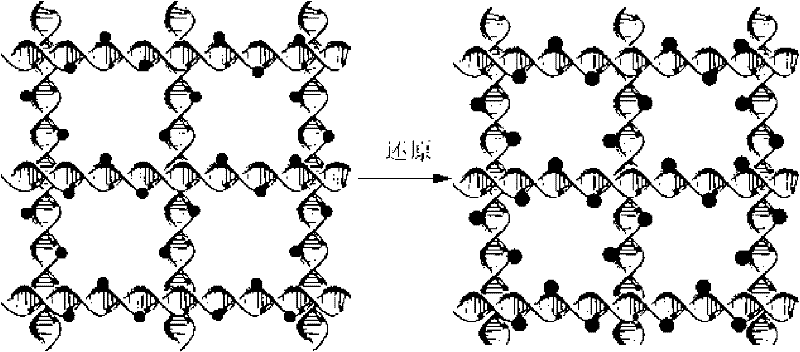Food-borne pathogenic bacteria detection immuno-sensor and preparation method thereof
A technology of food-borne pathogens and immune sensors, applied in instruments, measuring devices, scientific instruments, etc., can solve the problems of difficult identification of bacterial strains, many human-influenced factors, and inaccurate results, and achieve easy promotion and use, and portable promotion The effect of using
- Summary
- Abstract
- Description
- Claims
- Application Information
AI Technical Summary
Problems solved by technology
Method used
Image
Examples
Embodiment Construction
[0050] Such as figure 1 As shown, 1 is the silicon substrate, 2 is the electrode layer, 3 is the DNA conductive chain layer and the functionalized modified specific antibody layer, 4 is the display of comb weak current sensing signal, and 5 is the power supply.
[0051] The electrode layer is a comb-shaped electrode, the DNA conductive chain layer is composed of DNA and gold particles, and the functionalized specific antibody layer is composed of specific antibodies functionalized and modified on the gold particles. It is an immunosensor for the detection of food-borne pathogens The detection objects are Vibrio parahaemolyticus, Staphylococcus aureus, Salmonella, Listeria.
[0052] Such as figure 2 As shown, the DNA was stretched by controlled droplet movement stretching, comb-type polystyrene interline stretching, molecular comb, air blowing method, free liquid flow method, and spin coating. Using a bottom-up approach, DNA self-assembly is used to fabricate molecular array...
PUM
 Login to View More
Login to View More Abstract
Description
Claims
Application Information
 Login to View More
Login to View More - R&D
- Intellectual Property
- Life Sciences
- Materials
- Tech Scout
- Unparalleled Data Quality
- Higher Quality Content
- 60% Fewer Hallucinations
Browse by: Latest US Patents, China's latest patents, Technical Efficacy Thesaurus, Application Domain, Technology Topic, Popular Technical Reports.
© 2025 PatSnap. All rights reserved.Legal|Privacy policy|Modern Slavery Act Transparency Statement|Sitemap|About US| Contact US: help@patsnap.com



